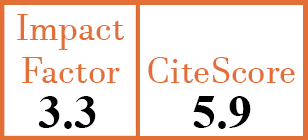Full Papers
A co-produced patient-reported outcomes-driven dashboard to support shared decision-making in rheumatologic diseases: a feasibility study
M. Kuharic1, C.N. Hurt2, G.J. Greene3, E. Ruderman4, Y.C. Lee5, A.M. Mandelin6, D. Cella7, J.D. Peipert8
- Department of Medical Social Sciences, Northwestern University Feinberg School of Medicine, Chicago, IL; and Department of Pharmacy, Systems, Outcomes and Policy, University of Illinois Chicago College of Pharmacy, Chicago, IL, USA. maja.kuharic@northwestern.edu
- Department of Medical Social Sciences, Northwestern University Feinberg School of Medicine, Chicago, IL, USA.
- Department of Medical Social Sciences, Northwestern University Feinberg School of Medicine, Chicago, IL, USA.
- Department of Medicine, Division of Rheumatology, Northwestern University Feinberg School of Medicine, Chicago, IL, USA.
- Department of Medicine, Division of Rheumatology, Northwestern University Feinberg School of Medicine, Chicago, IL, USA.
- Department of Medicine, Division of Rheumatology, Northwestern University Feinberg School of Medicine, Chicago, IL, USA.
- Department of Medical Social Sciences, Northwestern University Feinberg School of Medicine, Chicago, IL, USA.
- Department of Medical Social Sciences, Northwestern University Feinberg School of Medicine, Chicago, IL, USA.
CER18438
2025 Vol.43, N°9
PI 1593, PF 1603
Full Papers
PMID: 40737042 [PubMed]
Received: 12/12/2024
Accepted : 17/03/2025
In Press: 22/07/2025
Published: 18/09/2025
Abstract
OBJECTIVES:
This study explored the potential of a co-produced clinical dashboard on shared decision-making (SDM) and patient-reported outcomes (PROs), and its usability in rheumatology care.
METHODS:
We conducted a prospective, single-group, pretest-posttest study involving patients with rheumatologic diseases (RD). Patients completed PROs via their patient portal which was integrated with the electronic health record (EHR), and data were displayed on a dashboard accessible to clinicians. The collaboRATE tool assessed SDM. Changes in three Patient-Reported Outcomes Measurement Information System® (PROMIS®) measures (Physical Function, Fatigue, Pain Interference) were evaluated using the Likely Change Index. Dashboard usability was assessed with the System Usability Scale (SUS), where a score above 68 indicates above-average usability, user satisfaction was assessed with the SPHERE questionnaire, and dashboard integration was assessed with the Normalization Measure Development (NOMAD) scale.
RESULTS:
We enrolled 123 patients with RD between December 2021 and April 2022. The participants were predominantly female (80.3%), aged 24-82 years (mean: 54, SD: 15.0), with rheumatoid arthritis being the most common condition (37.4%). Three months after the dashboard integration, top box scores on all CollaboRATE questions increased significantly from 35% to 55% (p<0.001). The most significant PRO improvement was Pain Interference, with 35.5% of participants showing clinically significant improvement. The dashboard achieved an above-average user experience, as evidenced by its average SUS score of 75.9.
CONCLUSIONS:
Integrating a clinical dashboard into RD management may support SDM and pain management. This innovative approach enhances interactions between patients and clinicians, and increases patient involvement in their care.


